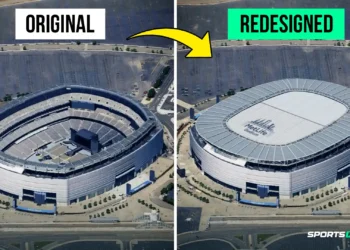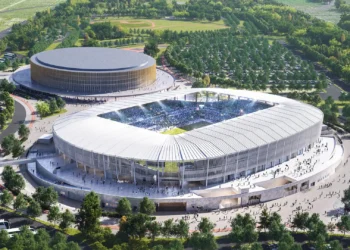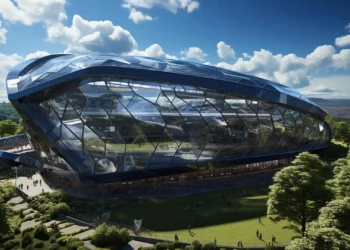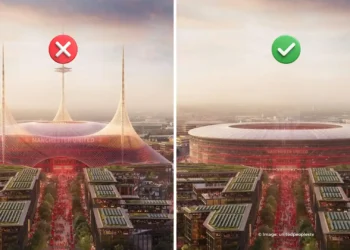De Kuip Enters Its Next Century: The €350 Million Transformation That Changes Everything
For years, the modernization of De Kuip has been one of the biggest football debates in the Netherlands. Now, after months of behind-the-scenes work, the long-awaited renovation proposal is finally public—promising a modern, expanded, and future-proof De Kuip that still respects everything fans love about the stadium.
According to Rotterdam architect Nanne de Ru, a key figure behind the plan, the response so far has been overwhelmingly positive:
“Everyone we’ve spoken to is enthusiastic. The plans are realistic and achievable.”
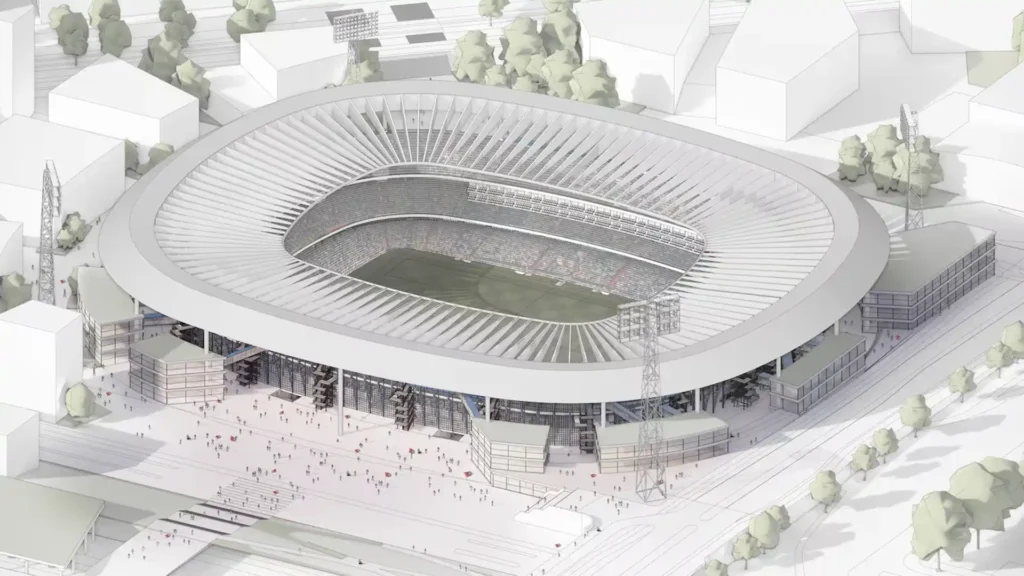
Capacity Rises to 56,000 Thanks to a Lowered Pitch
The core of the renovation concept is simple but powerful:
lower the pitch to create space for a full third tier.
This adjustment allows:
- 5,000 new seats, bringing total capacity to 56,000,
- preservation of affordable seating for regular fans,
- improved sightlines and closer proximity to the pitch,
- an expanded premium seating model without affecting the “people’s club” identity.
Once completed, De Kuip would officially become the largest football stadium in the Netherlands, surpassing all others in capacity.
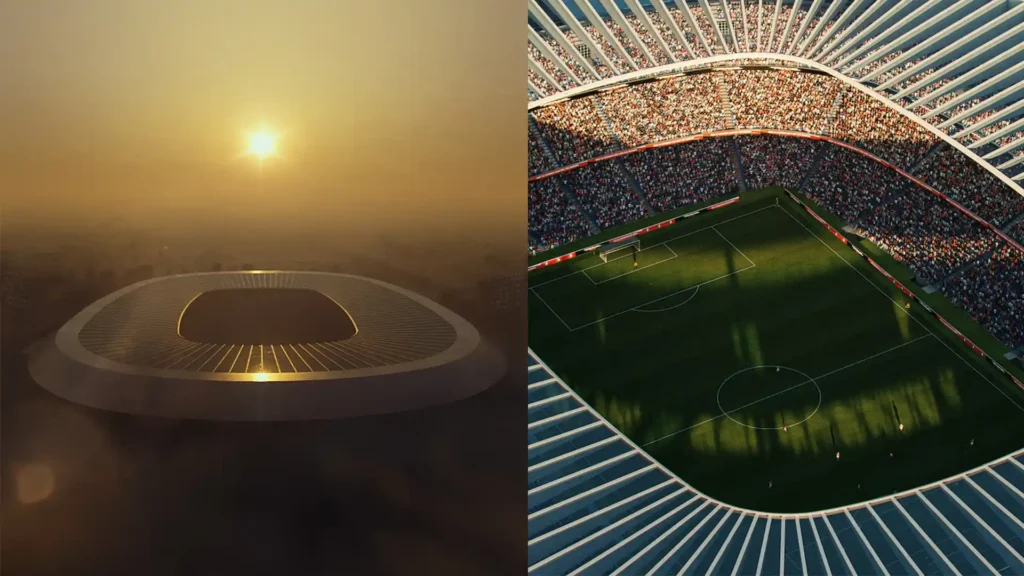
A Modern Stadium That Still Showcases Its Monumental Identity
The goal is not to erase history—it’s to enhance it.
Key architectural restorations include:
- the return of the iconic steel dome structure,
- reinstated glass facades that make the stands appear to “float,”
- preservation of the famous floodlights as a decorative landmark,
- removal of the current roof and installation of a new floating roof with a futuristic aesthetic.
This balance between old and new ensures De Kuip remains instantly recognizable while finally catching up with modern stadium standards.
Brand-New Player Facilities Built to UEFA’s Highest Standards
A major highlight of the project is the creation of a completely new underground facility for players, media, and staff on the Olympiaplein side.
This includes:
- modern dressing rooms that meet UEFA’s latest guidelines,
- upgraded media areas,
- direct bus access into the player zone,
- the entire Maasgebouw freed up for business hospitality expansions.
According to the developers, these improvements would put Feyenoord back among Europe’s elite in stadium infrastructure.
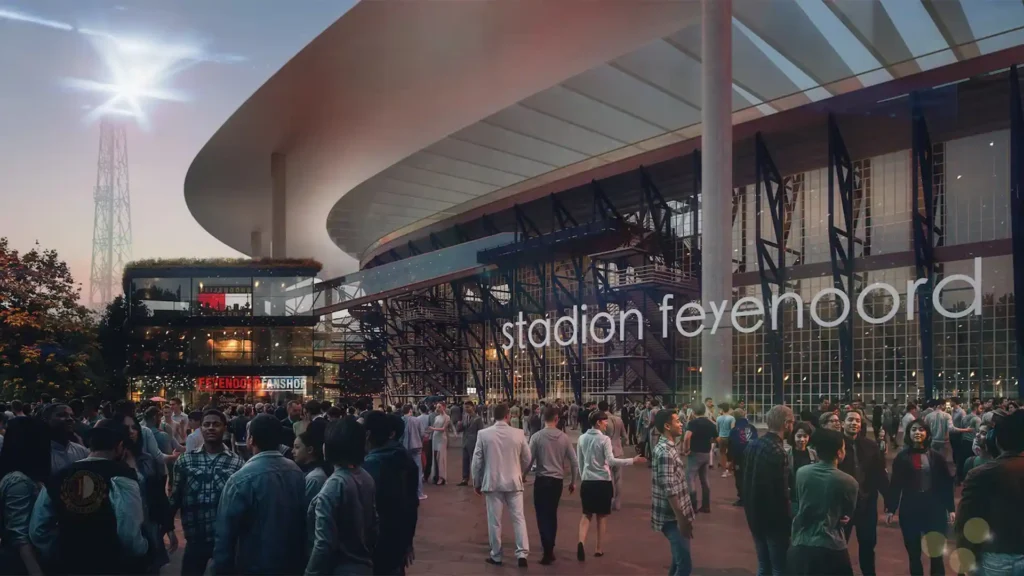
Eight New Pavilions: Turning De Kuip Into a Daily Destination
Around the stadium, eight new three-story pavilions will be constructed.
These structures will:
- support the new roof,
- house restaurants, cafés, and retail outlets,
- connect to the upper tier through elevated walkways,
- expand restrooms and catering areas.
The idea is to turn De Kuip into an all-day entertainment district, with visitors coming even on non-matchdays. The revenue generated from these commercial spaces will flow directly back into the stadium.
Financing the Project: Seat Licensing Is the Key
The total investment required is €350 million.
The financial model includes:
- Seat Licensing for 10 years (standard seats, business units, and everything in between),
- major sponsorship deals,
- potential municipal contributions,
- increased revenue activated during phased construction.
Seat Licensing alone is expected to generate around €250 million, shifting much of the financial risk from the club to the license holders.
Each construction phase is designed to immediately increase earning potential, meaning the stadium starts generating new revenue well before the final roof is installed.

No Temporary Relocation — Feyenoord Stays Home
One of the biggest advantages for supporters:
Feyenoord will continue playing at De Kuip throughout the renovation.
The KNVB will simply be asked not to schedule home matches between April and September during the earliest stages of work.
This phased approach prevents the logistical nightmare of moving to a temporary venue.
A Perfect Fit Within the New Rotterdam-Zuid Development Boom
The wider area around De Kuip is already undergoing massive transformation through projects like:
- De Veranda,
- Rotterdams Tij,
- Stadionpark.
Additionally, Rotterdam plans to build:
- a new intercity train station next to De Kuip,
- a third city bridge connecting Zuid to Kralingen.
These infrastructure projects will dramatically improve accessibility and foot traffic, turning the stadium district into one of the city’s major hubs.

What Happens Next?
Now, everything depends on whether Feyenoord’s management chooses to embrace the renovation plan. According to Nanne de Ru, the project:
- unifies stadium and club ownership,
- ensures long-term financial benefit for Feyenoord,
- does not aim for profit on the developers’ side,
- gives De Kuip the upgrade it deserves for the next century.
“We want to give De Kuip a new life,” says De Ru. “A fantastic home for Feyenoord for the next 100 years.”


